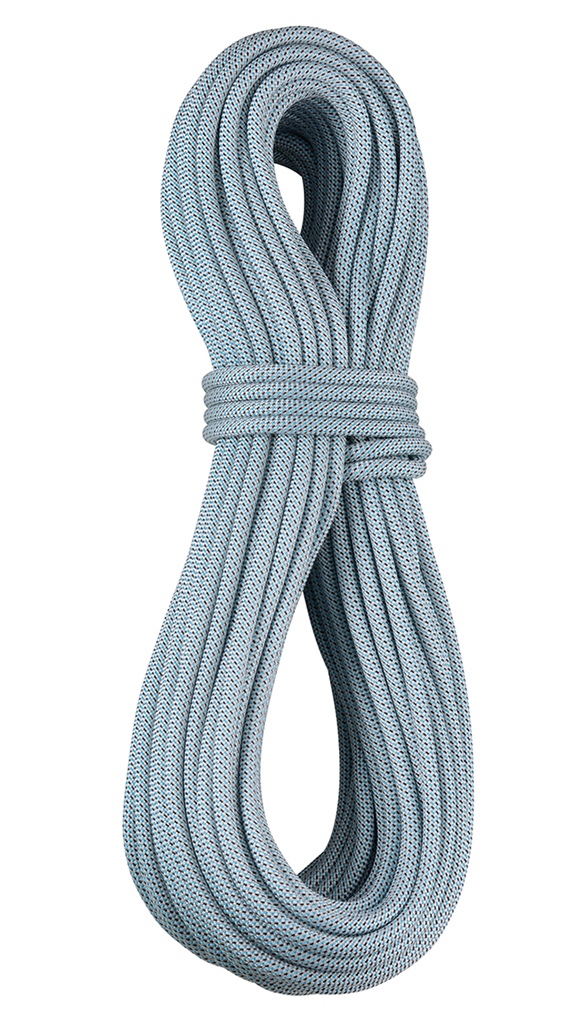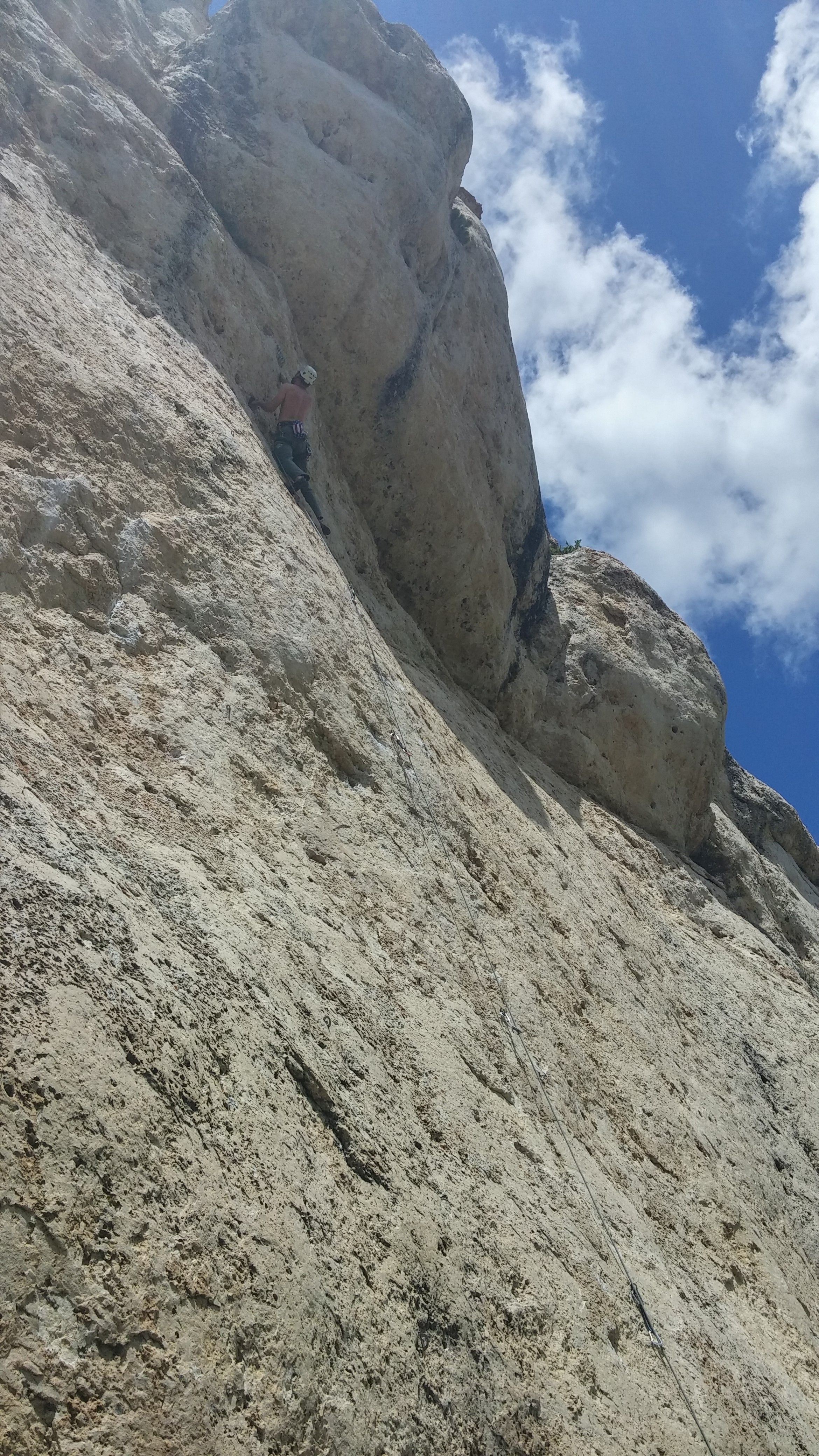
Edelrid Corbie Rope
Features:
- Certified as twin, double and single rope
- Pro Shield finish for optimal performance
- Dry Shield finish for outstanding dirt and water resistance
- Thermo Shield treatment for perfect handling
- Not suitable for working routes or top roping when used as a single rope
Specs:
Diameter: 8.6mm
Length: 70m
Rope Type: Single, Half, Twin
Weight(g/m): 51
Sheath Proportion: 29%
Number of Falls: 5
Impact Force (kN): 9.3
Dynamic Elongation: 32%
Static Elongation: 9.5%
Sheath Slippage (mm):0
MSRP: $290
Days Tested: 12
Locations Tested: Eldorado, Clear Creek, Boulder Canyon; Rocky Mountain NP, CO; Fremont Canyon, Wild Iris, WY.
The Edelrid Corbie, a single rope checking in at a decidedly slim 8.6mm, is a perfect example of a modern specialty rope. Ropes like the Corbie have grown more common as material and weave technologies have allowed manufacturers to create slimmer and slimmer ropes. (I talked about this briefly in the context of double ropes in my review of the Mammut Twilight.)
The Elderid Corbie is nearly the thinnest single rope on the market, second only to the 8.5mm Beal Opera. At this end of the single rope spectrum, the diameter of the rope alone is an indication of its specialty, where light weight and small volume are valued above all else.
Even so, I’ve used the Corbie in all manner of free climbing settings (5.8 to 5.12, on both gear and bolts, as well as on a couple of alpine trips) to get a better feel for what exactly its performance specialty is and isn’t.
Anatomy
Before looking at how the Corbie climbs, a quick breakdown of its vital stats: the 8.6mm rope weighs a trim 51g/m. While that’s certainly towards the bottom of the grams-per-meter scale, the rope is not quite as light as its diameter would indicate. For example, the Metolius Monster 8.9mm (certified as single/half/twin rope, just like the Corbie) weighs 52g/m, and Sterling posts a stated weight for the Fusion Nano IX of 52g/m as well. The first rope to obtain certification for use as a single, half, and twin rope, the Beal Joker 9.1, comes in close behind, at 53g/m.

Now that seemingly high weight per meter for its diameter isn’t a failure on Elderid’s part to save weight however possible, it’s simply part of the larger trend of diminishing weight savings returns as a rope’s diameter is decreased. After all, the sheath material of thinner ropes usually accounts for a smaller portion of their overall weight. 29% of the Corbie’s weight is accounted for by its sheath material, while the Beal Joker is 35% sheath by weight, and the Edelrids Boa (9.8mm) is a sturdy 40% sheath.
The core of the rope does the work when it comes to catching falls, and the colorful sheath exists solely to absorb wear and abrasion that might otherwise affect the core. Thus, thinner and thinner ropes can’t simply scale down, since there’s only so much core material you want to give up. This means that most of the omitted material is coming from the sheath. And since the sheath is typically less dense than the core, this means that rope weight and diameter have a non-linear relationship, especially in the thinner sizes.
I should mention here that this rule is not absolute, it’s merely a trend. For example, it’s common for half/twin ropes to have more than 29% sheath by weight, but there are other factors at work here.
First and foremost is the fact that the certification tests for half ropes and twin ropes are markedly different than for single ropes, purportedly because half or twin ropes are used as part of a two-rope system. (Discussing the merits or flaws of the UIAA testing methodology is, mercifully, outside the scope of this review, so we’ll pass on that subject for now and come back to it another day.)
Weight and Diameter
If thinning the diameter of the rope means you’ll have less protective sheath material in exchange for small weight savings, what, then, is the point of a thinner rope? After all, if you think you can tell the difference between 51g/m and 52g/m (a sum total of just over 1 ounce), then I would strongly advise you to re-assess what is slowing you down.
The answer is that diameter impacts a rope in more ways than just the rigid, out-of-the-box weight. Thinner diameters have less surface area in contact with things such as carabiners, and can therefore reduce rope drag over the course of a pitch. This can make that raw 1 oz weight seem like a lot more when the friction of a wandering pitch comes into play.
Additionally, 60m of a thinner rope simply takes up less room in your pack.
Are these factors worth running less sheath material and the durability reduction that comes with it? That’s up to you to decide.
NEXT: Ideal Uses, Performance, Etc.
